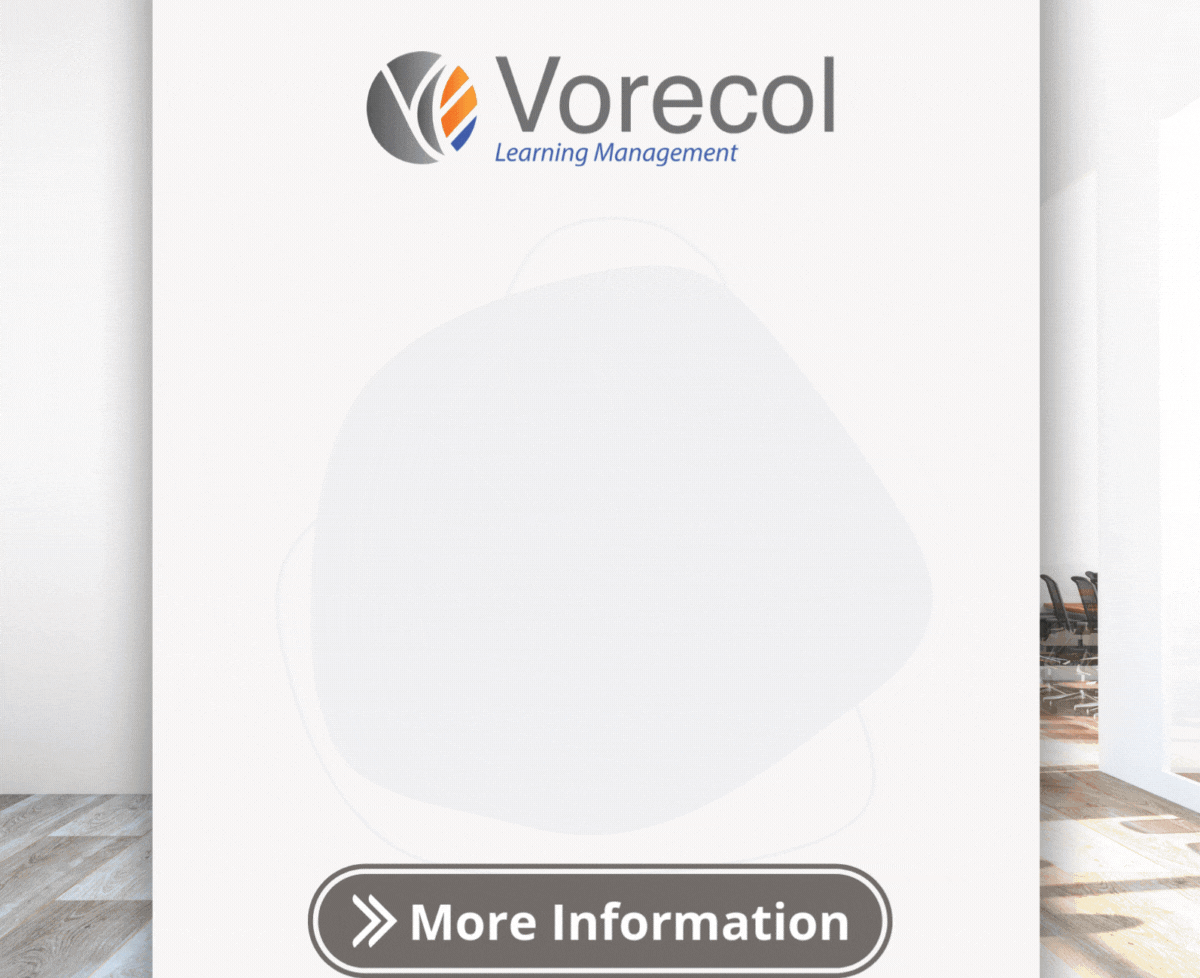Best Practices for Implementing UserCentered Design in LMS Platforms

- 1. Understanding User-Centered Design Principles
- 2. Conducting User Research to Inform Design Decisions
- 3. Creating User Personas for Targeted Solutions
- 4. Designing Intuitive Navigation for Enhanced Usability
- 5. Incorporating Feedback Loops for Continuous Improvement
- 6. Ensuring Accessibility and Inclusivity in LMS Design
- 7. Measuring Success: Key Metrics for User-Centered LMS Platforms
- Final Conclusions
1. Understanding User-Centered Design Principles
Have you ever walked into a website that seemed to know exactly what you needed? It's like visiting a friend’s house who always anticipates your cravings, offering you your favorite snack before you even ask for it. That’s the magic of user-centered design (UCD). At its core, UCD is about putting users at the heart of the design process, ensuring that their needs, desires, and limitations guide every decision. Statistics show that companies that adopt UCD principles can see a staggering 400% increase in their return on investment, making it clear that creating experiences tailored to users isn't just good practice—it's smart business.
Imagine deploying a learning management system that not only offers courses but also adapts to the unique learning styles of its users. With effective UCD principles, platforms like Vorecol Learning in the cloud can actively engage users, providing tailored content that resonates with their individual needs. This approach not only boosts knowledge retention but also enhances user satisfaction. It’s refreshing to think of technology as an ally that listens, evolves, and ultimately fosters growth, turning learning into an exciting and personal journey rather than a mundane task.
2. Conducting User Research to Inform Design Decisions
Imagine you’re about to launch a new app, and you’re convinced it’s going to be a hit. But then, during a user research session, you discover that users are completely baffled by the very feature you were promoting as the “game changer.” Surprised? This is the power of user research—it can reveal insights that design teams might otherwise miss. According to recent studies, 70% of product features are never used because they were developed in a vacuum, without the user's voice being heard. By engaging users early and often, teams can create more intuitive designs that genuinely meet their needs, while also avoiding costly missteps.
The process of user research doesn’t just happen at the beginning of a project; it should be embedded throughout the design journey. Regular feedback loops can dramatically inform design decisions, ensuring that every iteration reflects what users truly want. For those looking to streamline this process, tools like Vorecol learning can be incredibly beneficial. By integrating learning management systems into your user research workflows, teams can better analyze user behavior and preferences, making design choices that resonate deeply with the audience. After all, who knows better than the users themselves what works and what doesn’t?
3. Creating User Personas for Targeted Solutions
Imagine walking into a coffee shop where every customer is treated like a VIP. The barista knows their favorite drink, their usual pastry, and even how they like their seating. This tailored experience is the power of creating user personas – a deep understanding of your target audience that allows businesses to deliver solutions that resonate. Did you know that companies using data-driven personas can increase their marketing effectiveness by up to 73%? By identifying specific traits, preferences, and pain points, businesses can craft personalized strategies that not only attract but also retain customers.
Incorporating user personas into your strategy isn't just about marketing; it’s about fostering genuine connections. For instance, the Vorecol learning module delivers tailored training experiences by understanding the unique needs of each learner. This approach doesn't just help in employee development; it creates an environment where individuals feel valued and understood. Imagine a platform that not only hears but listens, adapting to the specific learning styles of your team. When you leverage detailed user personas, you’re not just providing training; you’re crafting a learning journey that transforms employee engagement and drives success.
4. Designing Intuitive Navigation for Enhanced Usability
Have you ever found yourself lost in a website that seemed to lead you in circles? It's frustrating, right? Imagine trying to shop online and getting so tangled in complicated menus that you eventually give up. This is where intuitive navigation comes into play. Studies show that 76% of users rank user-friendliness as the most important aspect of a website. Simple and logical pathways not only enhance usability but also have the power to keep users engaged and returning for more. Good design doesn’t just look pretty; it significantly impacts how effectively users can navigate and accomplish their tasks.
When it comes to learning platforms, for instance, seamless navigation becomes even more crucial. Users need to find resources easily without feeling overwhelmed. A tool like Vorecol learning in the cloud exemplifies this principle, providing a clean interface that allows users to access their learning materials quickly and efficiently. When learners don’t have to waste time figuring out where to go next, they can better focus on acquiring new skills. The end result? Happier users who feel competent and confident in their learning journeys. In today’s fast-paced world, usablity matters more than ever, so taking the time to design navigation thoughtfully is essential.
5. Incorporating Feedback Loops for Continuous Improvement
Imagine walking into a restaurant and tasting a dish that was just a little off – maybe too salty or undercooked. What if, instead of serving the same meal week after week, the chef actively sought feedback from patrons after each meal? This simple act could transform the dining experience, ensuring that each dish gets better and better. In the business world, this concept is known as a feedback loop, and it’s essential for continuous improvement. By systematically collecting and acting on feedback, organizations can refine their processes, enhance their products, and ultimately foster a culture of innovation. That’s why utilizing tools like Vorecol's learning management module can be a game changer, allowing teams to gather insights and adapt their training programs based on real user experiences.
Did you know that companies that actively incorporate feedback loops see a 10-15% increase in customer satisfaction? It’s staggering how engaging with your audience can have such a profound impact. Imagine regularly collecting comments and suggestions, analyzing them, and implementing changes based on genuine input. This is not just a way to address issues; it cultivates a sense of community and trust. For instance, using comprehensive platforms like Vorecol can help streamline this process, making it easier to manage feedback and make adjustments to learning modules. By embracing continuous improvement through feedback, businesses can remain agile and competitive in a fast-paced market.
6. Ensuring Accessibility and Inclusivity in LMS Design
Imagine a classroom filled with students, each with their own unique set of needs and learning styles. Now, picture an online learning platform that can cater to all those differences seamlessly. Did you know that nearly 1 in 5 people in the U.S. live with a disability? This statistic highlights the crucial need for accessibility and inclusivity in Learning Management Systems (LMS). By designing with inclusivity in mind, not only do we create a space where everyone can thrive, but we also enhance the overall learning experience. Think about how a modular LMS like Vorecol's cloud-based learning feature can help in providing customizable options that align with diverse learning preferences.
When we prioritize accessibility, we’re not just ticking boxes; we’re enriching lives. For instance, incorporating text-to-speech features can be a game-changer for visually impaired learners or those who prefer auditory methods. An LMS that supports these kinds of features empowers individuals, ensuring no one gets left behind. Tools like Vorecol’s learning module offer intuitive designs that make it easier to implement these necessary accessibility features effortlessly. Ultimately, creating an inclusive learning environment not only fosters growth among all learners, but it also cultivates a richer, more collaborative educational community.
7. Measuring Success: Key Metrics for User-Centered LMS Platforms
Imagine walking into a classroom where every student's engagement level is displayed on a giant screen. Sounds futuristic, right? But in today’s e-learning world, measuring success isn’t just about whether students are completing courses. It’s about understanding how they interact with the content. Metrics like course completion rates, engagement scores, and learner satisfaction are critical in evaluating the effectiveness of a Learning Management System (LMS). These insights enable educators and organizations to tailor their strategies, ensuring that learning is not just happening, but is genuinely impactful.
Now, what if you could have all these insights seamlessly integrated into one platform? Enter Vorecol Learning, a cloud-based solution that elevates the LMS experience by providing dynamic metrics right at your fingertips. With features designed to track user progress and gather feedback, you can pinpoint exactly what’s working and what’s not. This way, educators can adapt their methods to best suit the needs of their learners. In a world where data drives decisions, harnessing the power of these key metrics can transform how success is measured in user-centered learning environments.
Final Conclusions
In conclusion, implementing user-centered design (UCD) in Learning Management Systems (LMS) is essential for creating an effective and engaging educational experience. By prioritizing the needs and preferences of end-users—students, instructors, and administrators—platform developers can foster higher levels of satisfaction and retention. It is vital to conduct thorough user research, gather feedback through iterative prototyping, and ensure that the design is intuitive and accessible. These best practices not only enhance usability but also empower learners by providing them with a more personalized and contextually relevant learning journey.
Furthermore, the successful integration of UCD principles requires a collaborative approach, involving cross-functional teams that include designers, developers, and educators. By fostering open communication and shared goals, organizations can bridge the gap between technological capabilities and educational effectiveness. Additionally, continuous evaluation and adaptation of the LMS based on user feedback will ensure that the platform evolves in line with changing user needs and technological advancements. Ultimately, embracing user-centered design in LMS platforms not only enhances the learning experience but also contributes to the overall success of educational initiatives.
Publication Date: September 11, 2024
Author: Psicosmart Editorial Team.
Note: This article was generated with the assistance of artificial intelligence, under the supervision and editing of our editorial team.
Leave your comment
Comments
Request for information
Fill in the information and select a Vorecol HRMS module. A representative will contact you.
- Australia+61
- Bahamas+1
- Barbados+1
- Canada+1
- Ghana (Gaana)+233
- Guyana+592
- Hong Kong (香港)+852
- India (भारत)+91
- Ireland+353
- Jamaica+1
- Kenya+254
- Malta+356
- New Zealand+64
- Nigeria+234
- Pakistan (پاکستان)+92
- Philippines+63
- Singapore+65
- South Africa+27
- Trinidad and Tobago+1
- Uganda+256
- United Kingdom+44
- United States+1
- Zimbabwe+263



